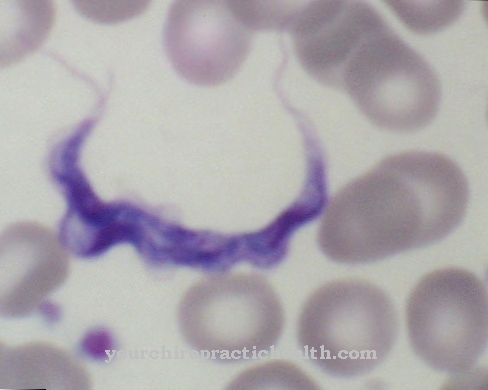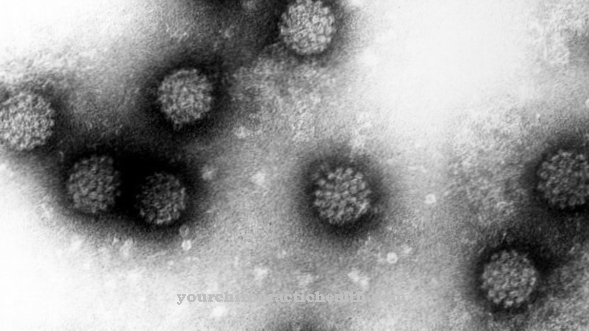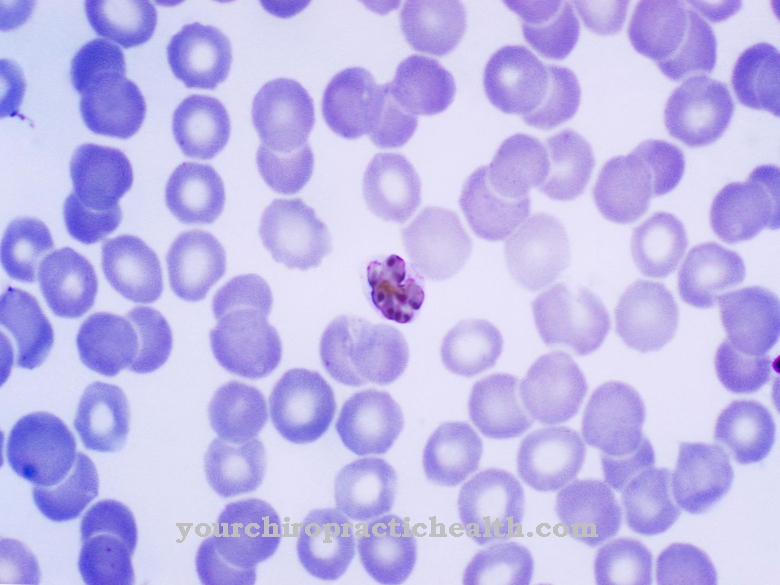As Klebsiella a group of bacteria is known that belongs to the gram-negative rod bacteria and thus to the enterobacteria family. Almost all sub-genera of the bacterial species are completely harmless to a healthy person, but can cause serious infections in people with immunological weakness. A major problem in this context is the genus' multi-resistance.
What are Klebsiella?
Klebsiella is a generic name for microorganisms. The genus is a genus of bacteria that contains, in particular, gram-negative rod bacteria. These rod bacteria come from the relatively large family of enterobacteria, which in the phylogenetic system belongs to the class Gammaproteobacteria and the Proteobacteria division.
The discovery of Klebsiella goes back to the German bacteriologist Klebs. He described the genus in the 19th century. The bacteria from the genus Klebsiella have no active ability to move. They lie in a capsule made of slime and live in oxic living conditions. So they get by with oxygen and live aerobically. However, the presence of oxygen is not a condition of survival for them. The bacteria are viable even in the absence of oxygen. In this context, bacteriology speaks of facultative anaerobic properties.
There is a greasy-looking film on the colonies of Klebsiella. Bacteriology now assumes around eight different subspecies of the bacterial genus.
Occurrence, Distribution & Properties
Bacteria from the genus Klebsiella live mainly in the soil, on grain or in water. These bacteria are also found in the human body. The subspecies Klebsiella pneumoniae physically inhabits the gastrointestinal tract of humans. The distribution of the bacterial genus is ubiquitous. This means that the bacteria occur practically "everywhere". With the property ubiquitous, bacteriology primarily refers to bacteria that occur everywhere in an organism or are present in all living beings.
Klebsiae process organic substances to generate energy. For this reason they are sometimes also described as chemoorganotroph. If oxygen is present in their habitat, their metabolism breaks down the organic matter into water and carbon dioxide. If they live in an anaerobic environment, the Klebsiella operate a special fermentation process and in this way produce various acids, CO2 and alcohol-2,3-butanediol. In an oxic environment, they have an oxidative energy metabolism and oxidize organic substances.
In other sub-genera of the Enterobacteriaceae, mixed acid fermentation corresponds to the anaerobic path of energy metabolism. This difference is therefore relevant for differentiating the Enterobacteriaceae sub-genera and can be detected using the Voges-Proskauer test.
According to recent studies, Klebsiella of the genus Klebsiella pneumoniae are mainly found in meat from factory farming. Presumably, the bacteria can be transmitted to humans when eating such meat. However, such a transfer has not yet been documented.
The Klebsiella are also common as hospital germs. The Robert Koch Institute investigated the outbreak in 72 hospital cases and was unable to determine the source of the disease. The researchers suspect that the bacteria are passed on from person to person.
A certain sub-genus of Klebsiella plays a role in the human body: the Klebsiella pneumoniae. These bacteria are found in the intestinal flora of healthy people and are relatively harmless if the immune system is normal. Although they are part of the intestinal flora, they can cause illness in patients with a compromised immune system.
Illnesses & ailments
Immunodeficient patients are, for example, AIDS sufferers, for whom the bacteria can be devastating. Although most of the Klebsiella sub-genera are harmless to humans, some sub-genera still call in people with immunodeficiency, various infections emerge. Pneumonia, which corresponds to inflammation of lung tissue, is one of these infections.
Urinary tract infections, such as chronic forms of cystitis, can also be traced back to Klebsiella. Since the bacteria colonize the gastrointestinal tract, they can also cause diarrhea in immunodeficient patients, which in turn can lead to severe weight loss.
The sometimes most severe infections caused by Klebsiella are septicemia and meningitis. The first illness corresponds to a severe general infection that is associated with bacteria and their toxins in the blood. The meningitis they cause corresponds in turn to inflammation of the pia mater and arachnoid mater.
Klebsiella are accordingly dangerous for patients with a weakened immune system and can even cause death, as drugs against the multi-resistant bacteria meanwhile hardly help. In addition, the Klebsiella granulomatis subgenus can also become unhealthy for people with normal immune systems. This subgenus is considered to be the causative agent of Granuloma inguinale. Granuloma inguinale corresponds to a bacterial disease with characteristic ulcerating lesions in the area of the genitals. Like all other species of Klebsiella, this subgenus is resistant to penicillin and antibiotics. This makes treatment extremely difficult in the event of illness.
Presumably, the bacterium's resistance is due to its spread in factory farming. Since preventive antibiotics are used permanently in factory farming, the bacteria had sufficient time to adapt to the drug. In the meantime, a cross-reaction has also been observed in connection with IgA antibodies and Klebsiella pneumoniae, which has led to an alignment of the antibodies to the body's own structures.

















.jpg)



.jpg)

.jpg)




